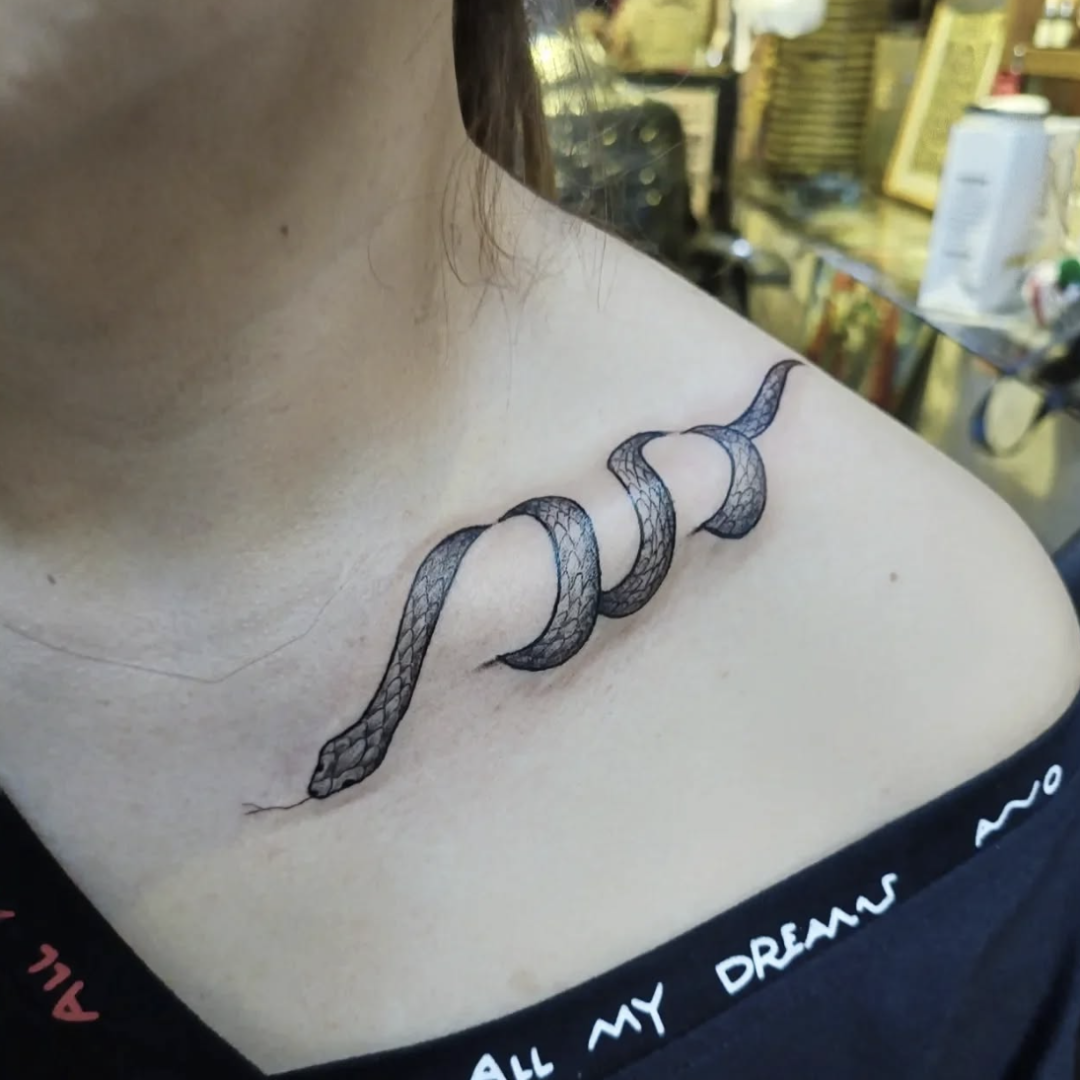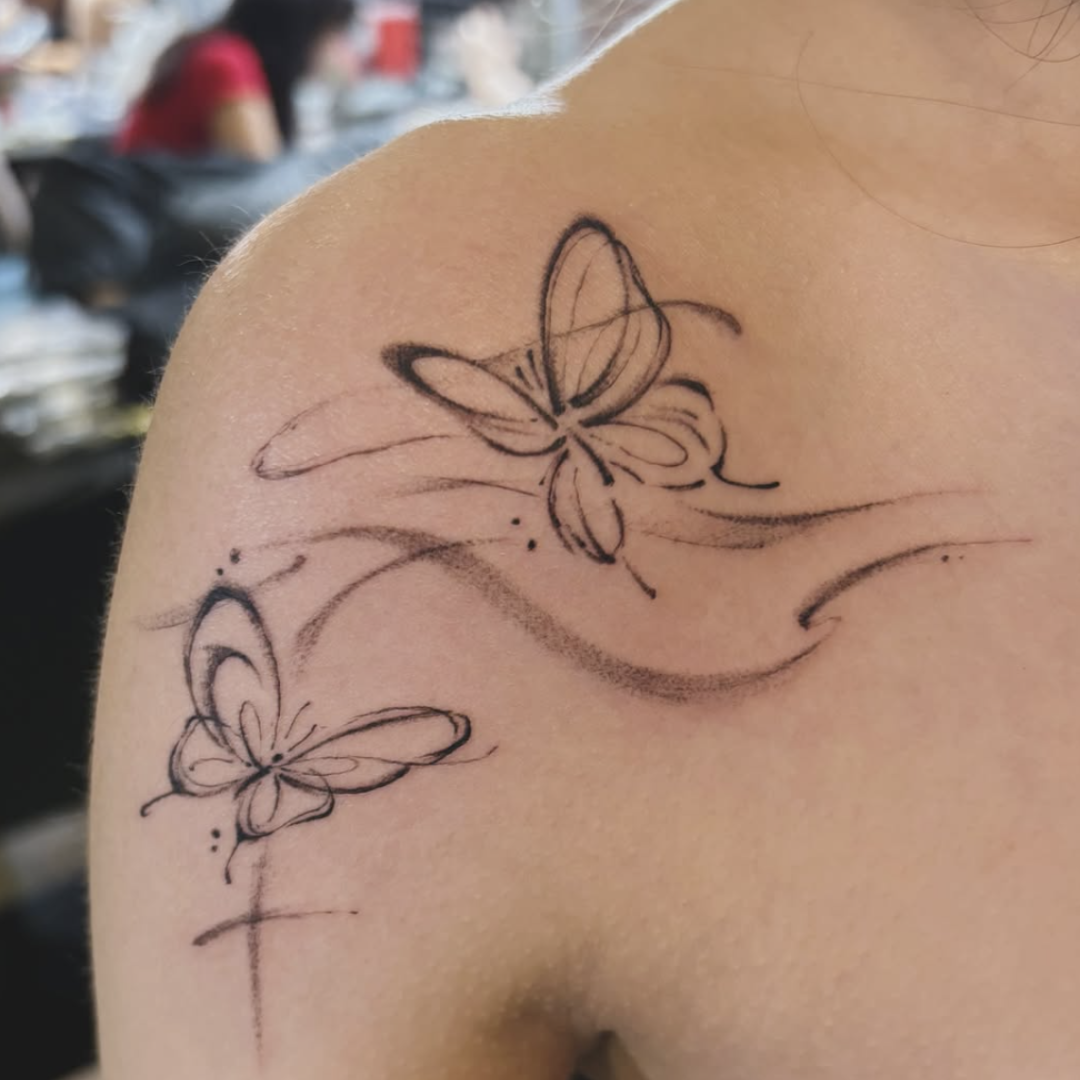The 10 Most Painful Places to Get a Tattoo (Ranked by Pain Level)
Posted on January 06, 2025 By Ttwins Tattoo

Tattoos are an incredible form of self-expression, but the process of getting one is not without discomfort. Some areas of the body are relatively painless, while others can make even the toughest individual’s wince. Understanding which spots hurt the most can help you prepare mentally and physically before getting inked.
This guide explores the ten most painful places to get a tattoo, why they hurt so much, and how to manage the pain effectively.
What Makes a Tattoo Painful?
The level of pain experienced during a tattoo session depends on several factors:
• Skin Thickness - Thinner skin means more sensitivity to pain.
• Nerve Endings - Areas with high nerve density feel more intense discomfort.
• Proximity to Bone - The closer the needle is to the bone, the more painful the
experience.
• Personal Pain Tolerance - Everyone experiences pain differently.
The Most Painful Tattoo Spots Ranked
1. Rib Cage
The rib cage is often considered one of the most painful areas for a tattoo. The skin here is thin, and there is little muscle or fat to cushion the bones. Every needle stroke vibrates through the ribcage, making it an intense experience. Deep breathing can help manage the pain.
2. Spine
The spine is packed with nerves, and the lack of muscle makes it extremely sensitive. The vibrations from the tattoo machine can feel unsettling, with sharp and lingering discomfort. This area requires mental preparation, as the pain can be continuous throughout the session.
3. Ankles and Feet
The skin on the ankles and feet is thin, with very little fat for cushioning. These areas contain many nerve endings, making the pain sharp and stinging. The healing process can also be difficult due to constant movement and friction from shoes.
4. Elbows
Both the outer and inner elbow are painful places for a tattoo. The outer elbow is mostly bone, creating a deep vibrating pain, while the inner elbow is highly sensitive due to the dense nerve endings. Tattooing this area requires patience, as the discomfort can be intense.
5. Knees
Like the elbows, the knees have both bony and nerve-dense regions, making them highly sensitive to tattooing. The pain can range from deep aching to sharp stings, depending on the exact placement. The skin around the knee also moves frequently, which can make healing more uncomfortable.
6. Armpit
Armpit tattoos are known for being extremely painful due to the high concentration of nerves and thin skin. Many tattoo artists even discourage getting tattoos in this area because of the intensity of the pain. The healing process can also be challenging due to constant moisture and friction.
7. Hands and Fingers
Hand and finger tattoos are highly sensitive because of the thin skin and high number of nerve endings. The pain feels sharp and persistent, and these tattoos also fade quickly due to frequent hand washing and exposure. Aftercare is crucial to maintaining the tattoo’s longevity.
8. Neck and Throat
The neck and throat are sensitive areas due to the thin skin and abundance of nerve endings. Tattooing here can feel like a combination of sharp stings and deep pressure. The vibrations from the tattoo machine can also cause discomfort, making it an intense experience.
9. Collarbone
Collarbone tattoos are popular but can be quite painful. The skin is extremely thin, with little muscle or fat covering the bone. The pain is a mix of burning and sharp sensations, and since the collarbone is always in motion, healing can take longer.
10. Inner Bicep
While the outer bicep is one of the least painful tattoo spots, the inner bicep is a different story. The skin here is soft and sensitive, and the area contains more nerve endings. The pain is a mix of dull aching and sharp discomfort, depending on the tattoo’s size and detail.

Frequently Asked Questions
Does tattoo pain feel like getting a shot?
Tattoo pain is different from a shot. Instead of a quick poke, it feels more like a continuous scratching or burning sensation.
Do numbing creams help?
Numbing creams can reduce the pain, but they do not eliminate it entirely. Their effectiveness varies from person to person.
How can I reduce tattoo pain?
Staying hydrated, eating before your session, avoiding caffeine and alcohol, and getting enough rest can all help manage pain levels. Taking breaks during longer sessions can also make a difference.
Is the Pain Worth It?
Pain is temporary, but tattoos are permanent. While some areas are more painful than others, the right mindset and proper preparation can make the experience more manageable. If you are concerned about pain, starting with a less sensitive area can be a good option before moving on to more challenging spots.
Conclusion
Getting a tattoo is a personal decision, and understanding the pain levels associated with different body areas can help set the right expectations. While certain spots may be more painful, the end result is always worth it for those who appreciate body art. If you are planning your next tattoo, take your pain tolerance into account and consult with your tattoo artist for guidance on placement and aftercare.